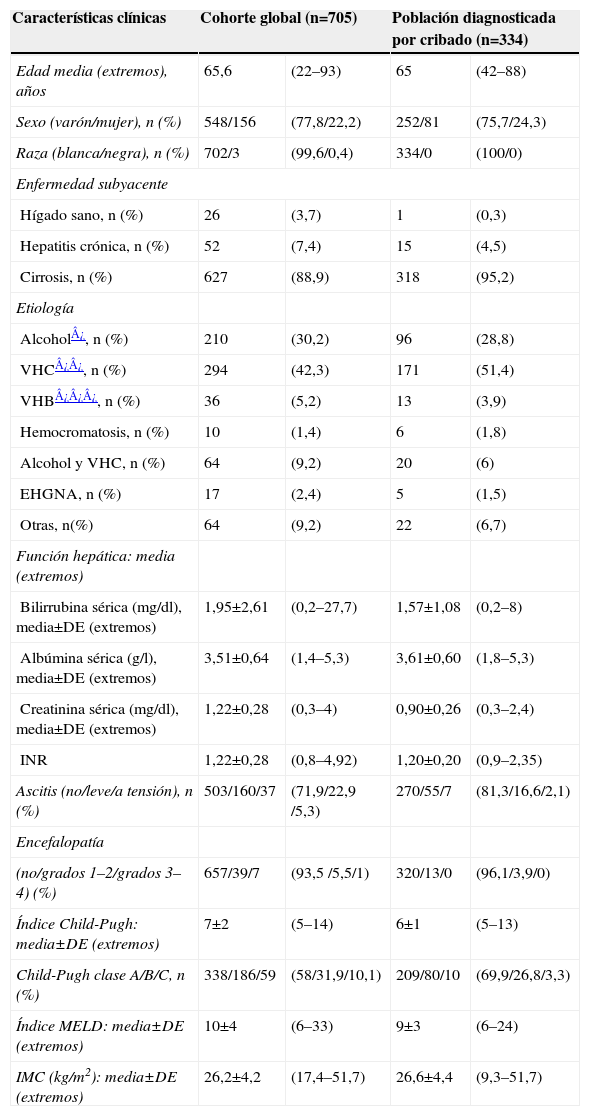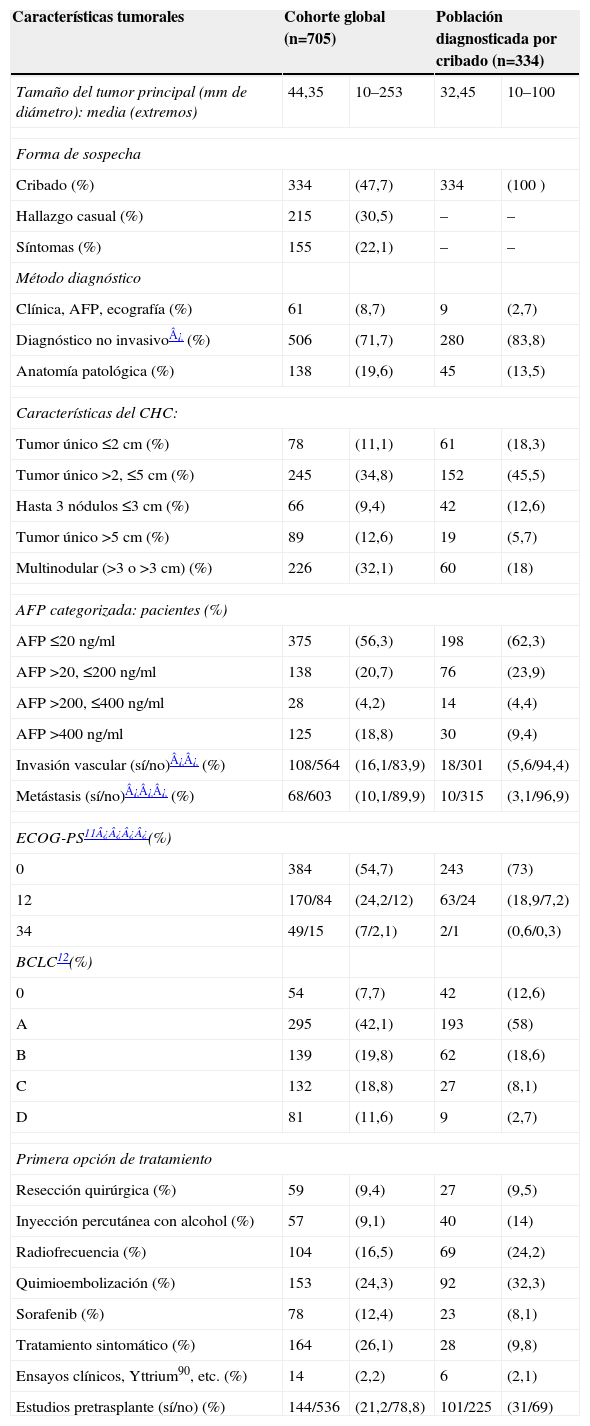El carcinoma hepatocelular (CHC) es la principal causa de muerte en pacientes con cirrosis, y su situación actual en España no es bien conocida. Por esto, se ha creado un registro nacional para evaluar las características de los pacientes con CHC de novo.
Pacientes y métodoEntre el 1 de octubre de 2008 y el 31 de enero de 2009, 62 centros de referencia registraron las características demográficas, clínicas y tumorales, la primera opción de tratamiento y la elegibilidad para el trasplante ortotópico hepático (TOH) de los CHC diagnosticados en este tiempo.
ResultadosSe contabilizaron 705 casos nuevos de CHC, un 78% en varones; la edad media era de 65 años y un 89% eran cirróticos (el 58% con Child-Pugh clase A, el 42% estaban infectados por el virus de la hepatitis C, el 30% consumía alcohol). Solo 334 casos (47%) se diagnosticaron mediante cribado. El tamaño del nódulo principal y el estadio Barcelona Clinic Liver Cancer fueron significativamente menores en el grupo de cribado que en el resto (p<0,001). La aplicabilidad de los tratamientos radicales (resección y ablación percutánea) fue significativamente mayor (el 47,5 frente al 24,6%; p<0,001), así como la evaluación para el TOH (el 31 frente al 12%; p<0,001). El cribado no fue diferente en función del sexo (p=0,204) ni de la edad (≤50 años; <65; <75 y >75 años) (p=0,171). La quimioembolización fue el tratamiento más indicado: en tumores iniciales (46,4%), en tumores mayores de 5cm (15,7%), en multifocales (37,9%) y como puente al TOH (33%).
ConclusiónLa mayoría de los CHC en España se diagnostican fuera de los programas de detección precoz y esto limita la posibilidad de aplicación de tratamientos con intención curativa.
Hepatocellular carcinoma (HCC) is the leading cause of death in patients with cirrhosis and its current situation in Spain is not well known. Therefore, a national registry was created to assess the characteristics of patients with de novo HCC.
Patients and methodBetween 1/10/2008 and 31/1/2009, 62 centers reported the baseline demographic, clinical and tumor characteristics, the first choice of treatment and eligibility for transplantation (OLT) of HCC diagnosed during this time.
ResultsThere were 705 new cases of HCC, 78% men, mean age 65 years, 89% cirrhosis (58% Child-Pugh class A, 42% HCV, 30% alcohol). Only 334 cases (47%) were diagnosed by screening. The size of the main nodule and BCLC stage were significantly lower in the screening group than in the rest (p<0.001). The applicability of radical therapies (resection and percutaneous ablation) was significantly higher (47.5% versus 24.6%, p<0.001) as well as the evaluation for OLT (31% versus 12%, p<0.001). The screening did not differ according to gender (p=0.204) or age (<50 years, <65, <75, >75 years) (p=0.171). Chemoembolization was the most common treatment: initial tumors (46.4%), tumors >5cm (15.7%), multifocal HCC (37.9%) and as a bridge to OLT (33%).
ConclusionThe majority of HCC patients are diagnosed in Spain out of early detection programs, and this limits the chance for early diagnosis and effective therapy.
Artículo
Comprando el artículo el PDF del mismo podrá ser descargado
Precio 19,34 €
Comprar ahora











